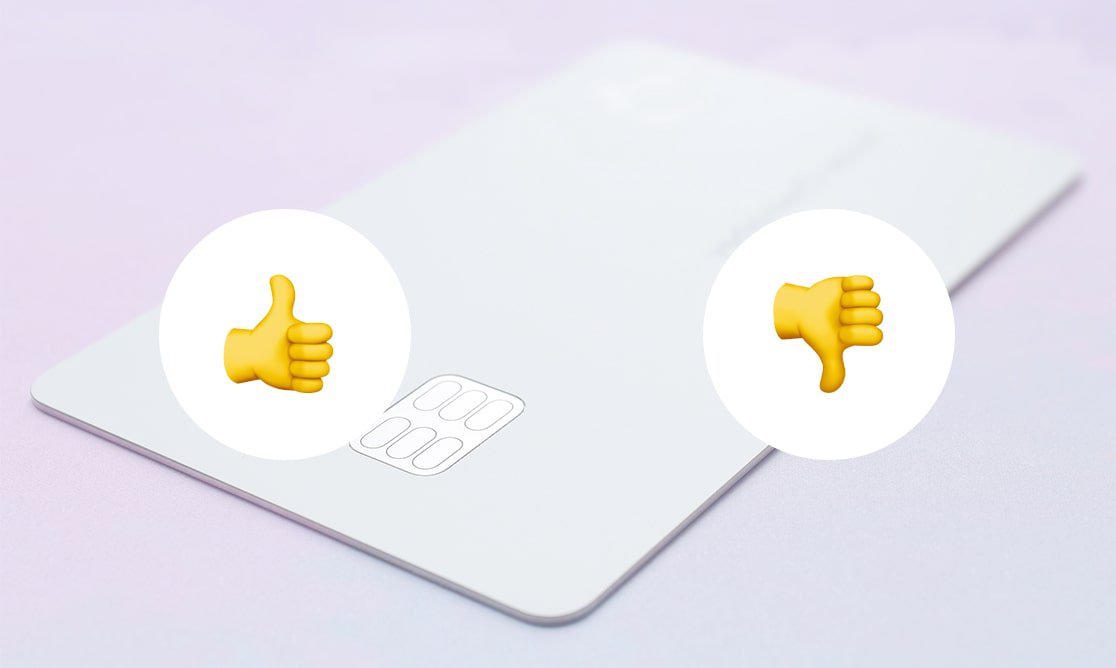When a credit card balance transfer is used correctly, it can cut your costs and help you to get out of debt. But there are drawbacks to be aware of.
If you’re concerned about whether a balance transfer is worth it, read on for more details on their pros and cons with examples of good and bad outcomes.
Make sure to compare balance transfer cards before applying.
Key takeaways
- Interest-free balance transfers can save a substantial amount of money on interest repayments and be a useful tool for getting out of debt.
- Costs (balance transfer fees), limitations (balance transfer limits, bank rules, etc.), and eligibility (credit score, income, etc.) have to be considered.
- Any remaining balance after the introductory period will be subject to the card's revert rate, which is usually significantly higher than the introductory rate.

How balance transfers can help
Balance transfer benefits
There are real benefits with credit card balance transfers.
- Move debt to a lower interest rate. With many banks offering interest-free introductory rates on balance transfers, you could save a lot of money on interest repayments alone.
- Use the money saved to repay debt faster. During the interest-free introductory period, you can use the money saved to pay back more of what you owe.
- Simplify your finances. By transferring your debt to a single new credit card, you can close your old cards (if you want to) and spend less time managing your accounts and keeping track of multiple payments.
Example case study
Getting out of debt with a balance transfer
Say you currently have a balance of $3,000 - about average for Australia, according to research by the RBA - that is charged an interest rate of 20% per annum. This means approximately 1.67% in interest per month, which works out to be just over $50.
Balance transferring to a card with 0% for 12 months would save around $600 in interest over the 12 months. After accounting for the 2% balance transfer fee, your total savings are $540.
You dedicate yourself to not using the card to spend with and getting out of debt by paying off $250 each month for a year, after which you’re debt-free.

The downsides of balance transfers
Balance transfer drawbacks
There are a few things to consider.
- There is usually a balance transfer fee to pay. This is a one-off fee charged to process your balance transfer request and is usually around 2 - 3% of the amount being transferred to your new card. Balance transfer fees can be paid up-front or added to the balance, meaning you will owe more.
- Balance transfer limits apply. Apart from your credit limit, which is the absolute maximum amount you can transfer, most banks only allow a certain amount to be transferred. This is called the balance transfer limit and is usually a percentage of your credit limit. Each bank’s policy is different. You can expect to be able to use anywhere from 70 - 100% of your credit limit for balance transfers. It is possible that you won’t be able to transfer all of your debt to a single card.
- You could use the card and find yourself deeper in debt. On most balance transfer cards, only balances transferred are interest-free. If you use the card to spend with or to withdraw cash, you could slip into more debt since interest will accrue on those transactions (unless the card also has an introductory offer on purchases).
- Any debt left after the introductory period moves to a higher rate. The balance transfer revert rate will be applied to any, balance transferred debt that remains once the introductory rate ends. This will be either the purchase or cash advance rate (depending on the bank), which may be as high as or higher than what you had originally.
- Only new customers can get introductory balance transfers. If you already have a card with the bank offering the balance transfer card you want, you will not be eligible for the introductory offer. For example, you can't transfer between St.George and BankSA cards, but you can transfer from NAB to CommBank. Some banks do offer balance transfers for existing customers, although these offers are not as competitive as those for new customers.
Example case study
A balance transfer gone wrong
Say you currently have a balance of $3,000 - about average for Australia, according to research by the RBA - that is charged an interest rate of 20% per annum. This means approximately 1.67% in interest per month, which works out to be just over $50.
You decide to make a balance transfer to a card with 0% for 12 months and pay a 2% balance transfer fee. You would save around $600 in interest over the 12 months, but the balance transfer fee would cost you $60.
3 months later you find yourself spending $2,000 with the card. You leave the balance on the card for the rest of the year. This attracts the 20% p.a. Interest rate on purchases, which works out at 1.67% each month or about $33. Interest charges on the purchases come to $297 for the year.
Unfortunately, you haven’t paid off the balance transfer by the time the introductory period ends and $2,000 of debt moves to the cash advance rate. At 22% p.a., this costs 1.83% per month or just under $37.
You now find yourself with $4,000 of debt outstanding and interest charges amounting to $70 per month ($33 per month for interest on your new purchases and $37 for interest towards the debt you balance transferred).


